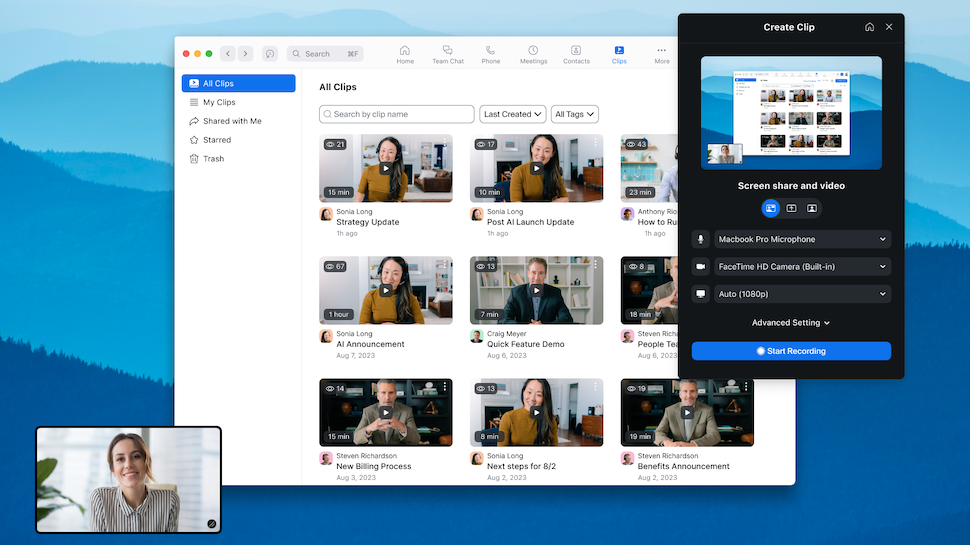
Zoom has launched a new video functionality designed to make video conferencing less exhausting, or rather, to eliminate the need for some video calls altogether.
Zoop Clips, available globally, allows users to record, edit, and share short-form video messages to colleagues and, better still, clients and contacts outside of their organization.
The company says it hopes this will help teams cut down on the number of meetings they take part in, reducing lost time and improving worker efficiency.
Zoom Clips
Once the presenter has crafted their video, they can amend sharing settings to ensure it reaches the right people within the right timeframe. For the creator, the videos will remain visible in a centralized content management system within the regular Zoom interface under a new tab, called ‘Clips’.
The platform has also built in analytics to its Clips, allowing the presenter to verify that all intended recipients have watched the video.
Colleagues are able to interact with the video by means of reacting or commenting, which can further reduce the need to hop on to a call to clarify something.
Like with regular Zoom calls, Clips supports virtual backgrounds and background noise cancellation technology.
Zoom Group Product Manager John Beckmann said: “With Zoom Clips, co-workers have a tool that can help them save precious time by communicating clearly across time zones, allow them to keep and manage their clips in a central place, and help them engage with their teammates asynchronously.”
There are two versions of Zoom Clips: Zoom One customers get access to Clips Plus as part of their plan for no additional fee, and other Zoom account holders including those subscribing to Zoom One Basic get access to Clips Basic.
Clips Basic imposes a limit of two minutes per video, and up to five video recordings. A $6.99-per-month add-on for Clips Plus is available to these customers from December.
More from TechRadar Pro
- We’ve rounded up the best online collaboration tools to support your workforce
- Still working remotely? Here’s the best hybrid working tech you need
- Workers are being overloaded with too many apps and chat services







